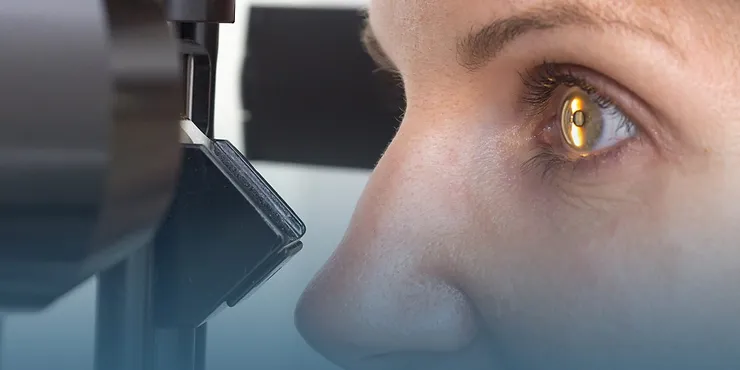
Keratoconus: Symptoms, Treatment
Do you often see blurry or have double vision even when you are wearing contact lenses? If yes, you might be suffering from keratoconus.
In this article, we'll give you a detailed guide on keratoconus and explain how you can get your perfect eyesight back.
What is Keratoconus?
The word "keratoconus" is derived from the Greek words "keras" (horn) and "konos" (cone). Keratoconus is a progressive condition that causes the cornea (a part of the eye) to thin and lose shape, causing blurry or distorted vision. The cornea, the clear outer lens or "windshield" of the eye, is normally shaped like a ball. When the structure is not strong enough (there's not enough collagen) to maintain its round shape, it bulges outward like a cone.

What Causes It?
The loss of collagen in the cornea is a common cause of keratoconus. This could be due to an imbalance in the production and destruction of corneal tissue by corneal cells. Some common causes of keratoconus are as follows:
Family history or Genetics
Eye rubbing
Chronic eye inflammation
Retinitis Pigmentosa
Ehlers-Danlos syndrome, and others
Keratoconus Diagnosis
You need to visit an optometrist who can examine and diagnose keratoconus. Diagnosis is done in one of the following ways:
Corneal topography, which is the most accurate way to diagnose and track the progression of early keratoconus. In this examination, a computerized image is taken in order to create a map of the corneal curve.
Another way is the slit lamp exam, also known as biomicroscopy, performed in an optometry. It enables the doctor to examine your eyes microscopically for any abnormalities or problems.
Keratoconus Treatment
Keratoconus treatment focuses on vision correction and is dependent on the stage of the disease.
When your symptoms are mild, you can correct your vision with glasses. Later on, you may need to wear hard contact lenses to help keep your vision in focus.
If your keratoconus is worsening, corneal collagen cross-linking may be recommended to slow down or stop its development. This is a modern treatment that may prevent the need for a corneal transplant. However, it does not cure keratoconus, nor does it improve your eyesight.
For advanced keratoconus, the corneal surface is flattened using C-shaped rings called intacs. Implanting them does result in better eyesight, and they may also help your contact lenses fit your eyes properly.
A corneal transplantation, when a cornea from a donor is used to replace the patient's damaged cornea.
Keratoconus is a progressive disorder that starts in your 10s or 20s and gradually worsens over a period of 10 or more years. Its progression slows down in your 40s or 50s. Diagnosis and treatment of keratoconus in its early stages gives you the best chance of minimizing permanent eyesight damage. Many people with keratoconus can maintain adequate vision with glasses or contacts if diagnosed early and treated by corneal cross-linking.








